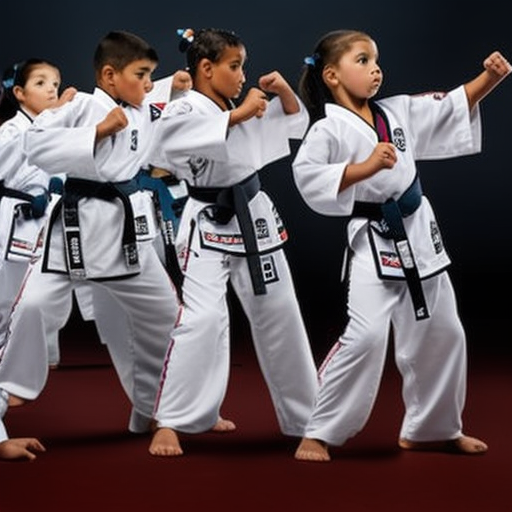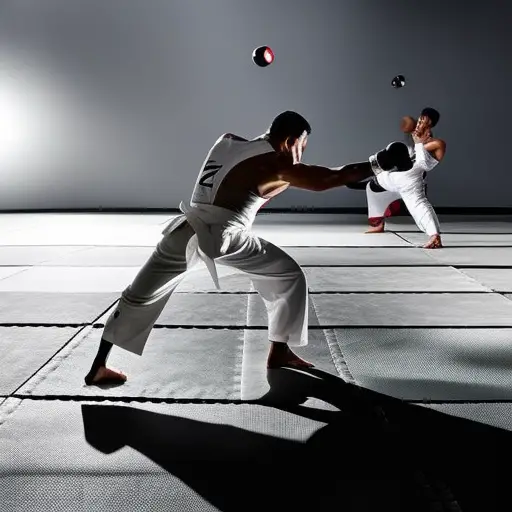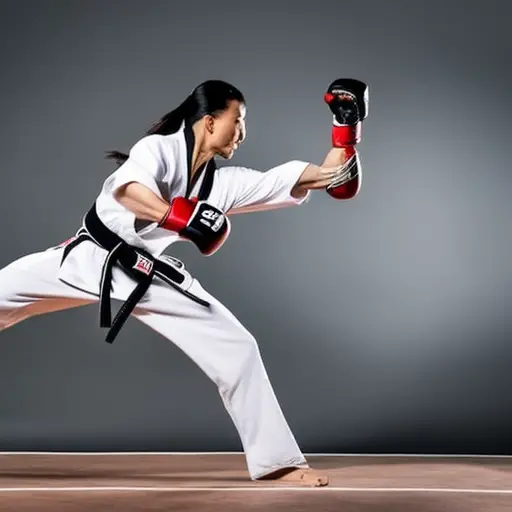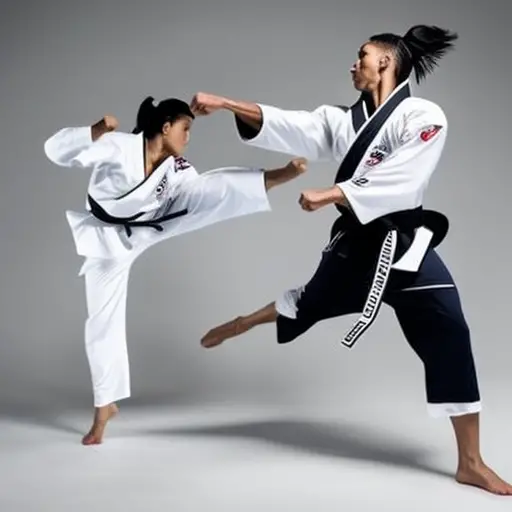The Role of Respect in Taekwondo
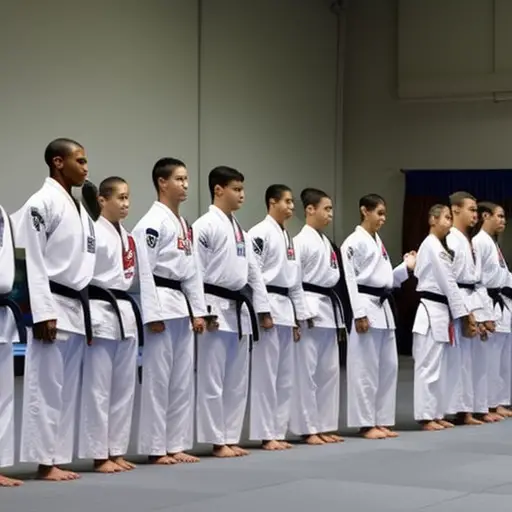
In the world of Taekwondo, respect is not just a formality, but an integral part of the practice. Drawing inspiration from the ancient traditions of the martial art, respect permeates every aspect of Taekwondo, from the historical roots to the philosophy behind it.
By exploring the significance of bowing, the cultivation of discipline, and the fostering of humility, this article delves into the profound role that respect plays in Taekwondo, shaping not only the practitioner’s character but also the camaraderie within the community.
The Historical Roots of Respect in Taekwondo
The profound historical roots of respect in Taekwondo can be traced back to its origins in ancient Korea. Taekwondo, which means the way of the foot and fist, has its historical origins deeply intertwined with the rich cultural heritage of Korea. Respect, a fundamental aspect of Korean culture, is ingrained in the teachings and practices of Taekwondo.
Taekwondo emerged during the Three Kingdoms period in Korea, which lasted from the 4th century to the 7th century. During this time, martial arts were not only developed for self-defense and combat purposes but also as a means to cultivate discipline, honor, and respect. These values were essential for maintaining harmony within society and fostering a sense of collective identity.
The cultural significance of respect in Taekwondo is evident in its practices and rituals. From bowing to the instructor and fellow practitioners before and after training sessions to adhering to strict codes of conduct, respect permeates every aspect of Taekwondo. This emphasis on respect extends beyond the physical training and is ingrained in the philosophy and moral principles of the martial art.
Furthermore, the historical origins of respect in Taekwondo highlight its evolution over time. As the martial art spread throughout Korea and eventually the world, its cultural significance expanded. Today, respect in Taekwondo is not only about honoring tradition but also about fostering mutual respect, tolerance, and understanding among practitioners from different cultures and backgrounds.
The Significance of Bowing in Taekwondo
Bowing holds a significant symbolic meaning in the practice of Taekwondo. It is a respectful gesture that reflects the core values of discipline, humility, and mutual respect.
In Taekwondo, bowing is not only an act of etiquette but also a reminder of the importance of discipline and maintaining a humble mindset throughout the practice.
Symbolic Meaning of Bowing
In the practice of Taekwondo, the act of bowing serves as a profound expression of reverence and acknowledgement towards one’s instructor and fellow practitioners. This symbolic gesture holds great cultural significance, representing a deep-rooted tradition within the martial art.
The act of bowing carries multiple layers of meaning, evoking an emotional response from those who partake in this ritualistic practice:
-
Respect: Bowing in Taekwondo signifies utmost respect for the instructor, recognizing their knowledge, experience, and authority in guiding students on their martial arts journey.
-
Humility: It humbles the practitioner, reminding them of the importance of modesty and the need to constantly strive for self-improvement.
-
Unity: Bowing symbolizes the unity of the Taekwondo community, emphasizing the bond and camaraderie shared between practitioners.
-
Tradition: By participating in this customary act, practitioners pay homage to the rich heritage and history of Taekwondo, connecting them to generations of martial artists who have come before.
Bowing, as a respectful gesture in Taekwondo, sets the stage for the subsequent exploration of the role of respect in this martial art.
Respectful Gesture in Taekwondo
Why is bowing considered such a significant and respectful gesture in the practice of Taekwondo?
Bowing in Taekwondo holds great cultural significance and is seen as a form of respectful greeting. It is a way for practitioners to show deference and honor towards their instructor, fellow students, and the art itself.
The act of bowing is rooted in the traditions of East Asian martial arts, where respect and discipline are highly valued. By bowing, participants demonstrate their understanding of the hierarchical structure within the martial art and their willingness to follow the guidance of their superiors.
Additionally, bowing serves to create a sense of unity and harmony among practitioners, fostering an atmosphere of mutual respect and courtesy. Therefore, bowing is not only a physical gesture but also a symbolic representation of the respect and humility that is inherent in Taekwondo.
Etiquette and Discipline
One of the key aspects of etiquette and discipline in Taekwondo involves the observance of various rituals, with bowing being a fundamental practice.
The importance of etiquette in Taekwondo cannot be overstated, as it serves as a foundation for discipline development. Through the act of bowing, practitioners learn to show respect and humility towards their instructors, training partners, and the art itself. This practice instills discipline by teaching students to control their ego and maintain a focused mindset.
The significance of bowing in Taekwondo goes beyond a mere gesture; it is a symbol of respect, gratitude, and commitment. By adhering to this tradition, practitioners cultivate a sense of honor and reverence, creating an environment conducive to learning and personal growth.
Etiquette and Manners in Taekwondo Practice
Etiquette and manners play a crucial role in maintaining discipline and respect in Taekwondo practice.
One of the key aspects is the importance of bowing, which signifies humility and reverence towards the art, the instructor, and fellow practitioners.
Additionally, politeness and proper conduct are expected at all times to create a harmonious and respectful training environment.
Importance of Bowing
Bowing is an essential aspect of Taekwondo practice as it demonstrates a student’s respect and humility towards their instructor and fellow practitioners. This act of reverence holds historical significance as it is deeply rooted in the cultural tradition of Korea.
Here are four reasons why bowing is crucial in Taekwondo:
-
Symbol of respect: Bowing is a physical manifestation of the deep respect that practitioners have for their instructors, symbolizing gratitude for their knowledge and guidance.
-
Cultivates discipline: Bowing instills discipline by reminding students of the importance of following rules and adhering to the etiquette of the practice.
-
Fosters humility: By bowing, students acknowledge that they are part of a greater community and humbly accept their place within it.
-
Strengthens unity: Bowing creates a sense of unity among practitioners, fostering a supportive and respectful training environment.
With the understanding of the significance of bowing, let us explore the next aspect of Taekwondo practice: politeness during training.
Politeness During Training
During taekwondo training, practitioners are expected to demonstrate both respect and politeness, as these qualities are essential for maintaining a harmonious and productive practice environment. Politeness in taekwondo goes beyond saying ‘please’ and ‘thank you.’ It encompasses using appropriate language, maintaining good posture, and showing consideration to others.
Politeness is crucial for effective communication within the training setting. It allows instructors to effectively convey instructions, and students to ask questions and seek clarification without fear of judgment. Moreover, it fosters an atmosphere of mutual respect, where everyone’s opinions and contributions are valued. By honing their communication skills and practicing politeness, taekwondo practitioners develop a deeper understanding of the art and a stronger sense of camaraderie.
Transitioning into the subsequent section, we will explore how respect cultivates discipline in taekwondo.
How Respect Cultivates Discipline in Taekwondo
Interestingly, the practice of respect in Taekwondo significantly fosters discipline among its practitioners. Respect is a fundamental aspect of the martial art, and it plays a crucial role in shaping the discipline of those who train in it.
Here are four ways in which respect cultivates discipline in Taekwondo:
-
Respect and self-control: Taekwondo teaches practitioners to respect themselves and others. Through this respect, individuals learn the importance of self-control. By exercising self-control, they develop discipline in their actions and behaviors, both inside and outside the training center.
-
Respect and mental fortitude: In Taekwondo, respect is not limited to physical gestures but extends to the mental aspect as well. By showing respect towards their instructors, fellow students, and the art itself, practitioners develop mental fortitude. This mental strength helps them overcome challenges, persevere through difficult training sessions, and maintain discipline in their practice.
-
Respect and commitment: Respect in Taekwondo fosters a sense of commitment among practitioners. By honoring their instructors and the traditions of the art, individuals become more dedicated to their training. This commitment fuels their discipline, as they understand the importance of consistent practice and improvement.
-
Respect and accountability: Taekwondo promotes a culture of respect and accountability. Practitioners learn to take responsibility for their actions and behavior, both on and off the training mat. This sense of accountability reinforces discipline, as individuals strive to uphold the values of respect and integrity in all aspects of their lives.
The Role of Respect in Fostering Humility
Respect plays a pivotal role in fostering humility among practitioners of Taekwondo. In the context of this martial art, respect is not merely a formality, but a fundamental value that shapes the mindset and behavior of individuals. By showing respect towards their instructors, fellow students, and the art itself, Taekwondo practitioners cultivate a deep sense of humility.
Humility is essential in Taekwondo as it allows practitioners to recognize their limitations and weaknesses, enabling them to grow and improve. It is through respect that humility is nurtured, as it teaches individuals to value others and their contributions. This fosters an environment of mutual support and learning, where practitioners are encouraged to be humble and open to feedback and guidance.
To illustrate the connection between respect and humility, consider the following table:
| Respect | Humility |
|---|---|
| Acknowledging the expertise of instructors | Recognizing personal limitations |
| Treating fellow students with kindness and consideration | Being open to learning from others |
| Honoring the traditions and values of Taekwondo | Accepting constructive criticism |
This table highlights the reciprocal relationship between respect and humility, showcasing how they work together to create a culture of growth and self-improvement in Taekwondo. Through fostering humility, respect in Taekwondo serves as a catalyst for cultivating discipline and enhancing personal development.
Building Camaraderie Through Mutual Respect in Taekwondo
As Taekwondo practitioners cultivate mutual respect, they foster a sense of camaraderie that strengthens the bonds within their community. Building trust and fostering unity are essential aspects of this process. Through mutual respect, practitioners create an environment conducive to growth, both individually and as a collective.
Here are four ways in which building camaraderie through mutual respect in Taekwondo can have a powerful impact:
-
Encourages teamwork: Mutual respect creates a supportive atmosphere where individuals work together towards common goals. By valuing each other’s contributions, practitioners learn to collaborate effectively, enhancing their overall performance.
-
Enhances communication: When respect is present, individuals feel safe expressing their thoughts and ideas. This open communication fosters understanding and cooperation, enabling practitioners to learn from one another and improve their skills.
-
Strengthens relationships: Mutual respect builds trust among practitioners, forming strong bonds that extend beyond the training floor. These relationships create a sense of belonging and support, leading to lasting friendships and a sense of community.
-
Promotes personal growth: When practitioners feel respected, they are more motivated to push themselves and reach their full potential. The encouragement and support they receive from their peers help them overcome challenges and develop confidence in their abilities.
The Impact of Respect on the Philosophy of Taekwondo
One significant aspect of Taekwondo philosophy is the profound impact that respect has on its principles and teachings. Respect is not only a fundamental value but also a guiding principle in the practice of Taekwondo. It plays a vital role in shaping the philosophy of this martial art and has a profound impact on both tournaments and training.
In taekwondo tournaments, respect is of utmost importance. It is not just about showing respect towards opponents but also towards officials, coaches, and fellow competitors. It creates an environment of sportsmanship and fair play, ensuring that all participants are treated with dignity and honor. Respect in tournaments promotes a sense of unity and creates a platform where individuals can showcase their skills and abilities in a respectful manner.
Furthermore, respect is closely tied to self-control in taekwondo training. Taekwondo emphasizes discipline and self-control as core principles. By showing respect to instructors and fellow students, practitioners learn to control their actions and emotions. Respect cultivates a sense of humility and teaches individuals to listen and learn from others. It instills the importance of following rules and regulations, promoting a safe and harmonious training environment.
Frequently Asked Questions
What Are Some Common Mistakes Practitioners Make When It Comes to Showing Respect in Taekwondo?
Common mistakes practitioners make when showing respect in Taekwondo include failing to bow properly, speaking disrespectfully to instructors, and disregarding the rules and traditions of the art. Respect is crucial in maintaining discipline and upholding the values of Taekwondo.
How Does Respect in Taekwondo Differ From Respect in Other Martial Arts?
Respect in Taekwondo, in comparison to other martial arts, is rooted in the fundamental principles of discipline, honor, and humility. It plays a vital role in every aspect of training, fostering a culture of mutual respect, self-control, and integrity.
Are There Any Specific Rituals or Gestures That Are Unique to Showing Respect in Taekwondo?
In Taekwondo, there are specific gestures and rituals that hold significance in showing respect. These gestures, such as bowing and addressing seniors with formal titles, are essential elements of Taekwondo etiquette.
Can You Share Any Personal Anecdotes or Stories That Highlight the Importance of Respect in Taekwondo?
Personal experiences and the lessons learned in Taekwondo highlight the importance of respect. These stories showcase how respect for oneself, instructors, and fellow practitioners fosters discipline, humility, and a positive training environment.
How Does the Concept of Respect in Taekwondo Extend Beyond the Training Studio and Into Everyday Life?
Respect in Taekwondo extends beyond the training studio and into everyday life by fostering positive personal relationships and enhancing mental well-being. It cultivates a sense of honor, discipline, and empathy, leading to better communication and conflict resolution skills.
Conclusion
In conclusion, respect plays a crucial role in the practice of Taekwondo. Rooted in its historical origins, respect is demonstrated through bowing, etiquette, and manners.
It cultivates discipline, fosters humility, and builds camaraderie among practitioners. Respect is not merely a formality but an integral part of the philosophy of Taekwondo.
By upholding respect, individuals can fully embrace the values and principles of this martial art. What better way to honor the legacy of Taekwondo than by acknowledging the significance of respect?

